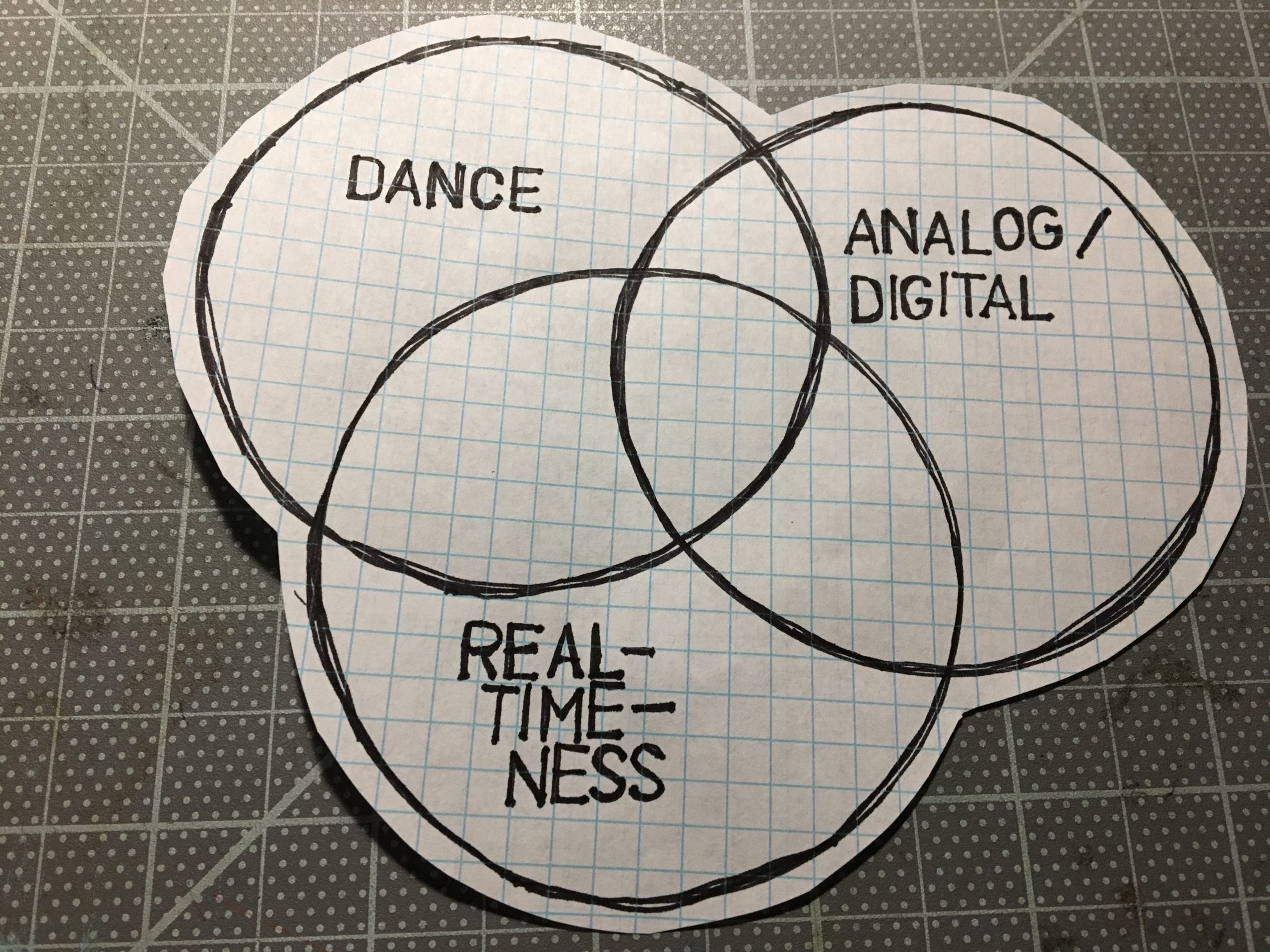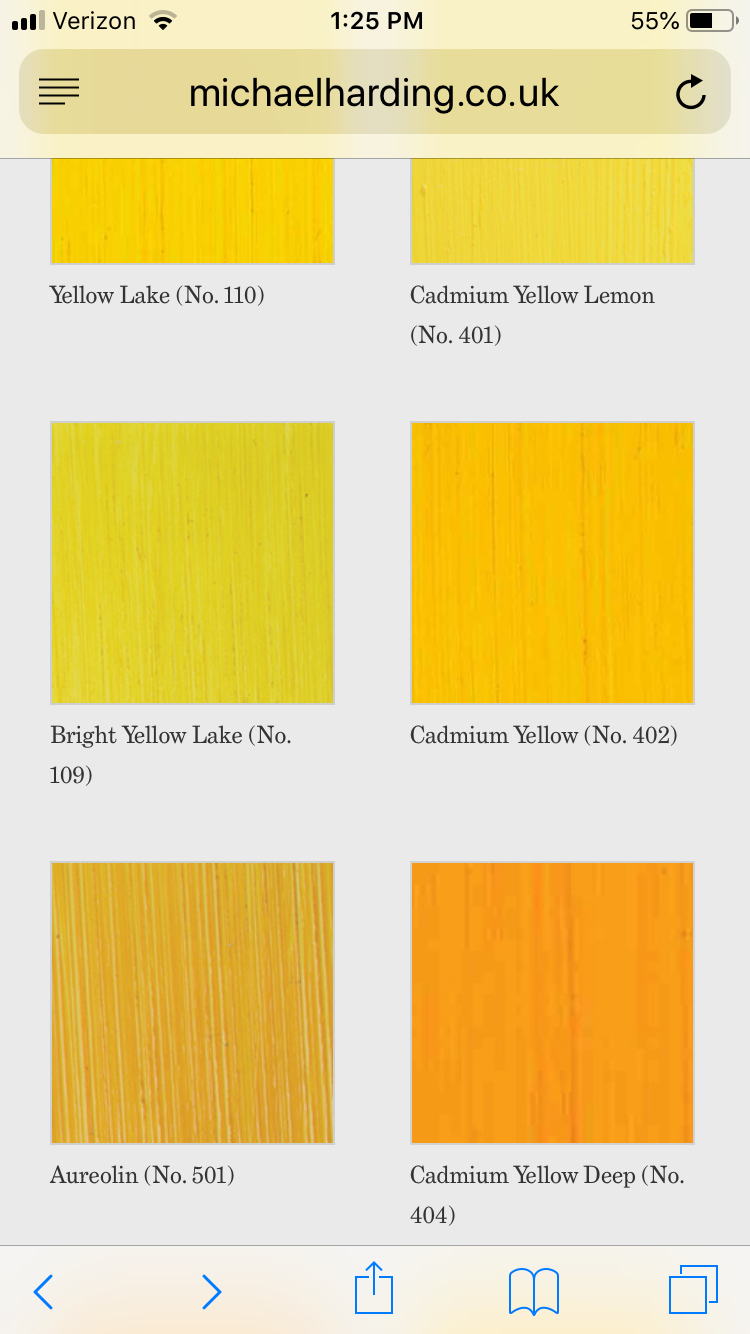Dance | Analog/digital | Real-time-ness
Incoming guest editor, dance artist Kristin Van Loon, sketches out three overlapping themes for her series, which is defined by the things that surround the thing.

A Venn diagram. The theme for this series is defined by the things that surround the thing.
Why make the thing if you already know what it is? That doesn’t mean we aren’t going to be specific. We’re all just going to make this series like I make a dance. Pointing at the elusive, the slippery. The verso. Peeking underneath. My Venn diagram’s three interlocking circles are: 1) Dance, 2) Analog/digital, 3) Real-time-ness.
1) Dance = duh. Dance in the biggest sense: the whole field, dance history, all traditions and attempts to break with tradition. Broadly defined as anything that I do with my body. It’s a listening to bodies as a primary guide. Asking the body its opinion instead of always asking it to jump through hoops held up by extra-body sources. Dance as a beacon to return to when my intellect, fascination with non-human objects, extra-dance concerns grow too loud. (Although on a good day, I will argue that anything is dance).
2) Analog/digital. As a 48-year-old who grew up in US suburbs, I feel the analog/digital transition acutely. The anti-consumerist in me resists the push to upgrade to new, new, new sparkly gizmos. At the same time, the person and artist I’ve become strives to tamp down nostalgic fetishization of the old, of the used-to-be. I feel an aching tension from navigating the analog/digital shifts in my present moment and over the span of my life. Like the impulse to press on a bruise, I hunker in and aim at the analog/digital transition as a sphere for choreographic research. I confess here that I engage in obsessive rituals: copying websites longhand then re-digitizing them, turning cassette tape music into mp3 files and recording back onto tape, transitioning images between paper and screen and paper and screen and paper and screen. These rituals can create components of dances, spark compositional epiphanies, suggest analogous activities to site in my dancing body.
3) Real-time-ness. I use this term loosely and often. I would love to dive into a choreography project that gets to the bottom of this fuzzy fascination in me. I think it has to do with letting things take as long as they want to take. I think many activities, revolutions, evolutions, choreographies take longer than they should; and just as many could benefit from taking longer. When I direct groups in improvisation scores, I notice a shift—a sigh and exhalation, a relaxing—when I suggest that an activity can take the time it wants to take. Some kind of deep affirmation is felt. The arena of Time, with permission in its terms, is a place where people can really be themselves. How can this be applied in my dancing, in my choreographic direction with other dancers, in process, in performance, in audiences, in the contexts and communities in which my dance making take place?
I will never recover from watching every music video Kate Bush ever made, in reverse chronological order, with a handful of nerds after hours at the Bryant Lake Bowl. It took hours and hours and hours.
I hope this series will say something about color too. On this diagram, color is either a barnacle growth on the outer margin of each ring—or the big circle that these three circles sit within. Maybe I’ll have an answer for you by the end of the series.
